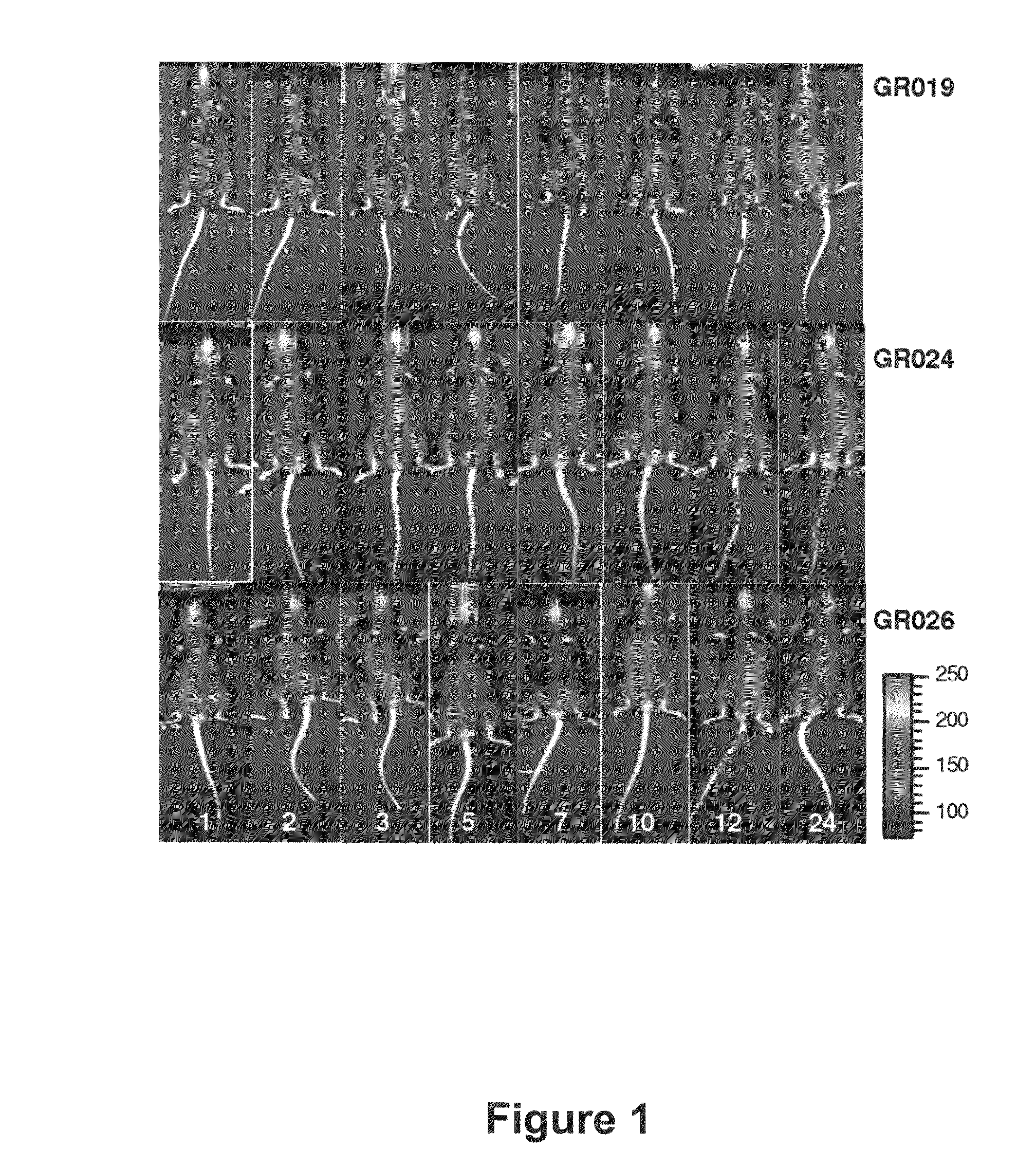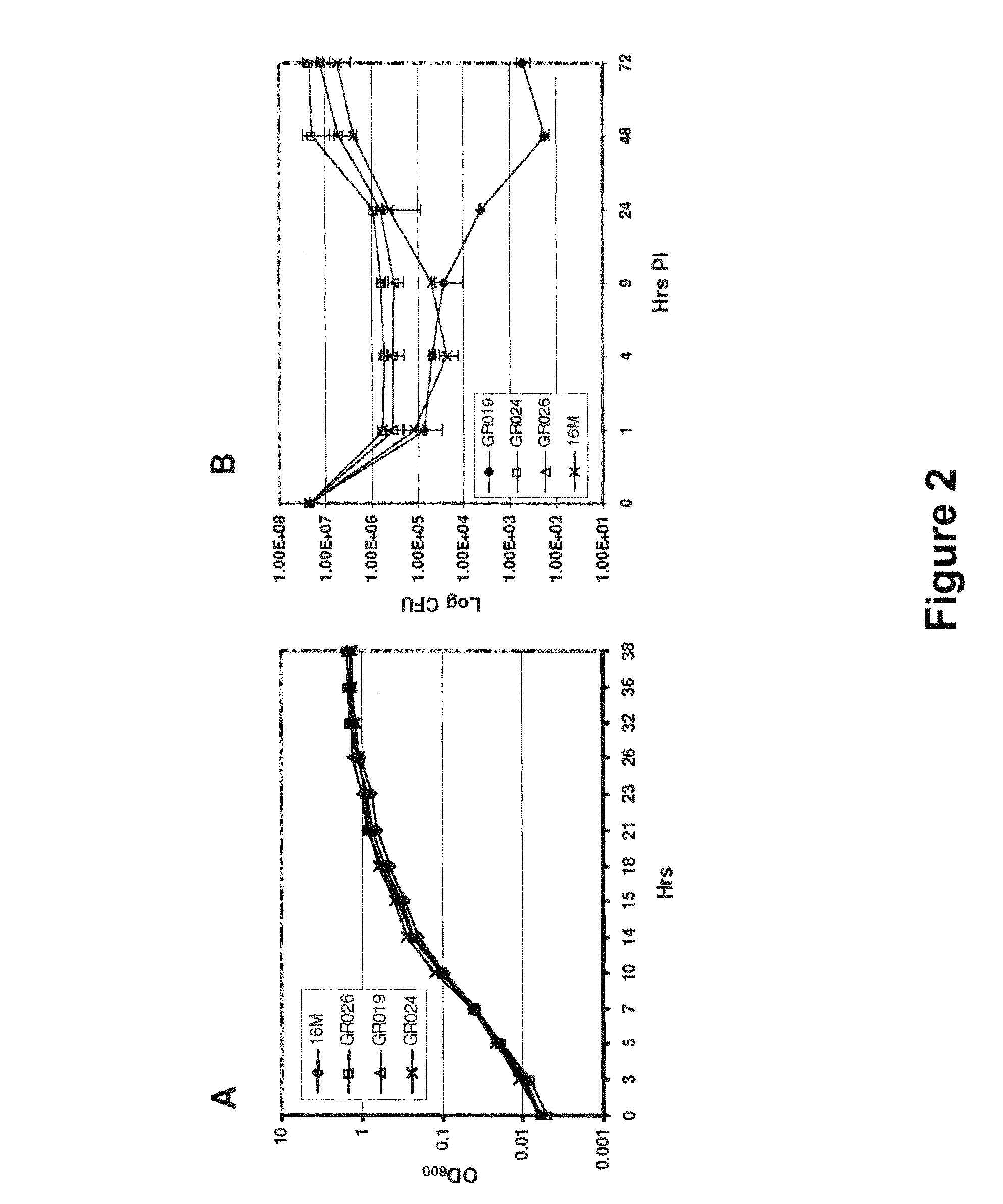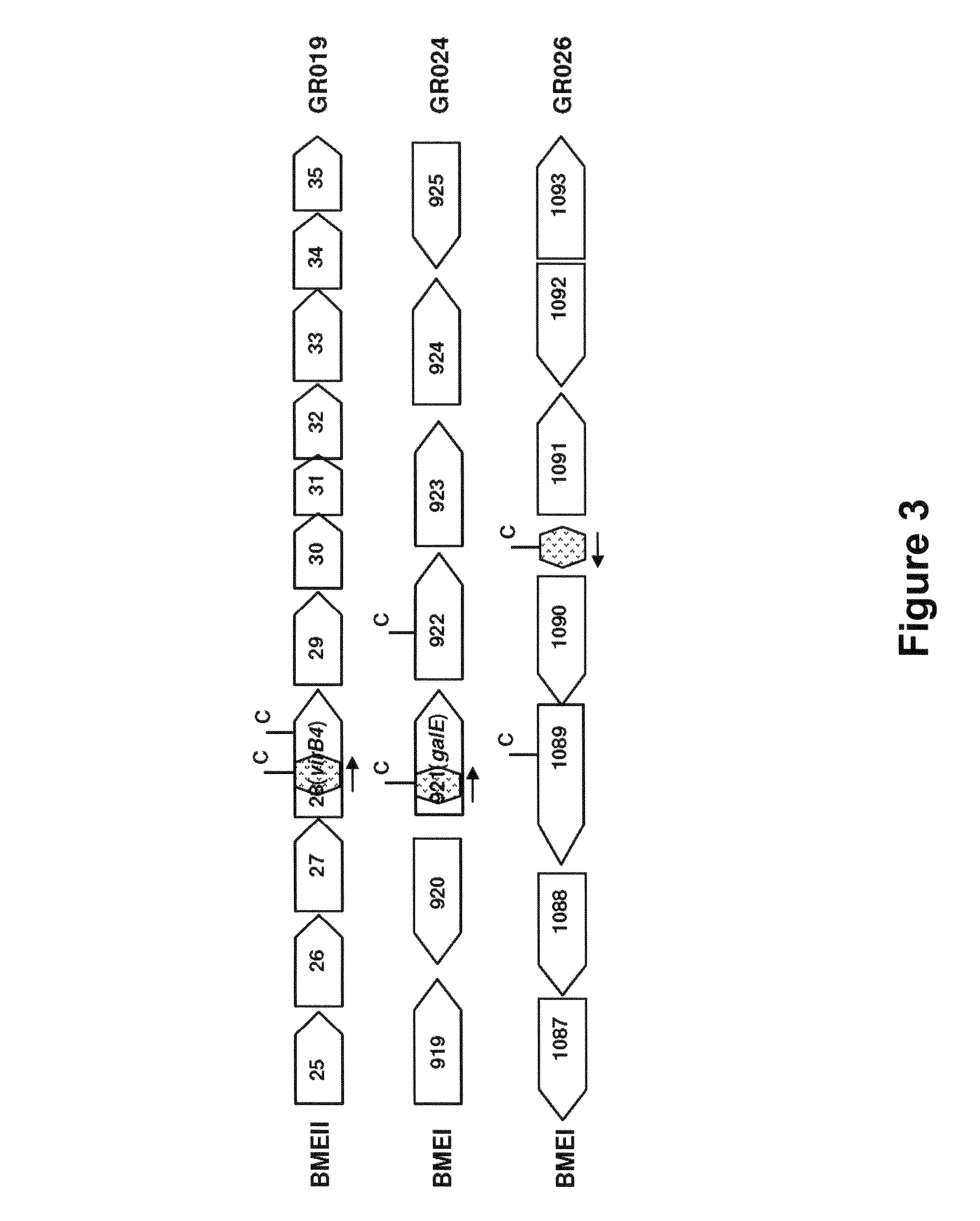Brucella melitensis mutants and methods
a technology of brucella melitensis and mutants, applied in the field of microbial genetics, can solve the problems of not being able to eliminate functional expression in full, and achieve the effect of improving the immune respons
- Summary
- Abstract
- Description
- Claims
- Application Information
AI Technical Summary
Benefits of technology
Problems solved by technology
Method used
Image
Examples
example 1
Bacterial Strains, Plasmids, and Growth Conditions
[0074]Bacterial strains and plasmids used in this study are listed in Table 1. Strains GR019, GR024, and GR026 are the EZ::TN-lux transposon insertional mutants of B. melitensis 16M containing the promotorless lux operon. A schematic illustration of the bioluminescence transposon and the mutagenesis and analysis strategy is shown in FIG. 15. B. melitensis Rev-1 is an attenuated strain of virulent B. melitensis 6056 (2, 13) and is used as a vaccine for brucellosis in small ruminants (4). B. melitensis 710 is a spontaneous rough mutant of Rev-1 isolated from vaccinated sheep and is phenotypically identical to Rev-1 except for the rough LPS. GR023 is a virulent bioluminescent strain of B. melitensis 16M (40) used for challenge studies. All Brucella strains were grown in brucella broth (Difco, Detroit, Mich.). Ampicillin 100 μg / ml, chloramphenicol 20 μg / ml, kanamycin 50 μg / ml, and zeocin; 50 μg / ml for E. coli and 250 μg / ml for Brucella w...
example 2
Mapping of the EZ::TN / lux Transposon Insertion Site
[0077]The site of transposon insertion in GR019, GR024, and GR026 mutants was identified by rescue cloning. Two micrograms of genomic DNA from each strain was digested to completion with NcoI to generate a fragment with intact transposon and flanking sequences. Digested DNA was religated using a FastLink DNA ligation kit (Epicentre). Ligations were dialyzed and transformed into electrocompetent EC100 Dpir+ cells (Epicentre) and plated on LB agar containing kanamycin. Two independent kanr colonies were selected, the plasmid was extracted and the site of insertion was identified by sequencing the plasmid DNA bi-directionally using outward primers (40). Sequencing was performed using dye terminators at the DNA sequencing core facility, University of Wisconsin Biotechnology Center. Sequences were compared to the 16M genome sequence to determine the site of insertion.
[0078]For Southern hybridization, 10 μg of genomic DNA was digested wit...
example 3
Inactivation of BMEI1090 and BMEI1091 in 16M
[0079]To generate specific deletions, suicide vectors pGR026-90K and pGR026-91K were electroporated into B. melitensis 16M. Cells were plated on brucella agar containing kanamycin. To select for double recombinants, the kanr colonies were checked for sensitivity to zeocin (zeos). The resulting kanr and zeos clones were streak purified, and one such purified clone was used for further study.
PUM
 Login to View More
Login to View More Abstract
Description
Claims
Application Information
 Login to View More
Login to View More - R&D
- Intellectual Property
- Life Sciences
- Materials
- Tech Scout
- Unparalleled Data Quality
- Higher Quality Content
- 60% Fewer Hallucinations
Browse by: Latest US Patents, China's latest patents, Technical Efficacy Thesaurus, Application Domain, Technology Topic, Popular Technical Reports.
© 2025 PatSnap. All rights reserved.Legal|Privacy policy|Modern Slavery Act Transparency Statement|Sitemap|About US| Contact US: help@patsnap.com



